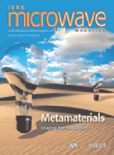
IEEE MICROWAVE MAGAZINE
Scope & Guideline
Innovative insights into the world of microwave technology.
Introduction
Aims and Scopes
- Microwave and Millimeter-Wave Technologies:
The journal emphasizes research and advancements in microwave and millimeter-wave technologies, covering a wide array of devices, materials, and applications. - RF Circuit Design and Applications:
A core area of focus includes the design and optimization of RF circuits, exploring theory and practical implementations for various applications. - Emerging Technologies and Materials:
The journal highlights cutting-edge research on new materials and technologies, such as GaN (Gallium Nitride) and SiGe (Silicon Germanium), which are pivotal for next-generation microwave systems. - Microwave Measurement Techniques:
A significant aspect of the journal is dedicated to measurement techniques and methodologies, providing insights into accurate characterization and testing of microwave devices. - Community Engagement and Education:
The IEEE Microwave Magazine prioritizes the promotion of diversity, inclusion, and educational initiatives within the microwave engineering community, fostering collaboration among professionals and students.
Trending and Emerging
- 5G and Beyond Technologies:
There is a significant emphasis on 5G technologies and their applications, including research on new architectures, circuit designs, and systems that support high-speed wireless communication. - Wireless Power Transfer (WPT):
Research on wireless power transfer technologies has gained traction, exploring innovative solutions for energy harvesting and powering devices without physical connections. - Integration of AI and Machine Learning:
The integration of artificial intelligence and machine learning techniques into microwave engineering is emerging as a hot topic, providing new methods for design optimization and analysis. - Sustainable and Green Technologies:
An increasing number of publications are focusing on sustainable microwave technologies and practices, including energy-efficient designs and environmentally friendly materials. - Metamaterials and Advanced Materials:
The exploration of metamaterials and novel materials for microwave applications is trending, with research focusing on their unique properties and potential uses in advanced devices.
Declining or Waning
- Traditional Passive Components:
There has been a noticeable decline in publications focusing on traditional passive components, such as inductors and capacitors, as more attention shifts towards active and integrated solutions. - Basic Microwave Theory:
Papers centered on fundamental microwave theory and basic principles have decreased in frequency, suggesting a growing preference for applied research and innovative applications. - Low-Frequency Applications:
Research centered around low-frequency microwave applications has waned, possibly due to the industry's increasing focus on high-frequency and mm-wave technologies.
Similar Journals
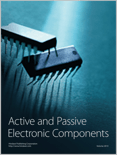
Active and Passive Electronic Components
Advancing Knowledge in Active and Passive ComponentsActive and Passive Electronic Components, published by HINDAWI LTD, stands as a significant open-access journal dedicated to the fields of electrical and electronic engineering, as well as materials science, particularly focusing on electronic, optical, and magnetic materials. Established in 1985, this journal aims to disseminate high-quality research, experimental studies, and theoretical analyses that contribute to advancements in electronic component technology and applications. Despite its recent category quartile rankings of Q4 in both relevant fields as of 2023, the journal plays an essential role in providing open access to critical findings that may benefit diverse sectors including telecommunications, consumer electronics, and renewable energy systems. Researchers, professionals, and students are encouraged to engage with the latest studies published in this journal, which has seen periods of publication interruption yet remains dedicated to fostering innovative research in its scope. With a commitment to open access, articles are freely available, promoting wider dissemination and collaboration within the scientific community.
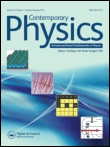
CONTEMPORARY PHYSICS
Unveiling the Dynamics of Modern Scientific InquiryCONTEMPORARY PHYSICS, published by Taylor & Francis Ltd, stands as a notable journal in the field of physics and astronomy, offering a comprehensive platform for the dissemination of cutting-edge research and developments since its inception in 1959. With an Impact Factor that reflects its solid position within the academic community, as evidenced by its Q2 ranking in the 2023 category of Physics and Astronomy (miscellaneous) and a Scopus Rank of 111 out of 243, this journal plays an essential role in bridging theoretical advances and practical applications. Researchers and professionals are encouraged to explore its diverse scope, which aims to foster innovative ideas and foster interdisciplinary collaboration. Although not currently an open access journal, CONTEMPORARY PHYSICS is committed to maintaining the highest standards of editorial excellence and provides valuable insights across converged eras of research from 1959 to 2024, making it indispensable for those dedicated to advancing their knowledge and contributions in the realm of physics.
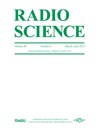
RADIO SCIENCE
Pioneering Research in Electromagnetic SciencesRADIO SCIENCE, published by the American Geophysical Union, is a premier journal dedicated to advancing the field of electromagnetic research across various domains, including Earth and planetary sciences, electrical engineering, and condensed matter physics. With an impressive convergence of scholarly contributions from 1966 to 2024, the journal is recognized for its impactful research, reflected in its Scopus rankings and its Q2 quartile status across multiple relevant categories. It ranks 71st in general Earth and planetary sciences and 396th in electrical and electronic engineering, highlighting its broad reach and significance. Although not an Open Access journal, RADIO SCIENCE continues to engage a dedicated readership of researchers, professionals, and students eager to contribute to and benefit from cutting-edge discoveries in the electromagnetic sciences. The journal serves as a vital resource for fostering dialogue and collaboration among academics and practitioners alike, promoting excellence in research and innovation.
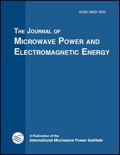
JOURNAL OF MICROWAVE POWER AND ELECTROMAGNETIC ENERGY
Fueling the Future of Microwave Power ApplicationsThe Journal of Microwave Power and Electromagnetic Energy, published by Taylor & Francis Inc, is a premier scholarly journal dedicated to the advancement of research in the fields of microwave power and electromagnetic energy. With a strong focus on innovative applications and theoretical developments, this journal serves as a vital platform for researchers, professionals, and students alike, fostering collaboration and dissemination of cutting-edge findings since its inception in 1985. Although currently categorized in the Q3 and Q4 quartiles across various disciplines such as Ceramics and Composites, Electrical and Electronic Engineering, and Condensed Matter Physics, the journal consistently emphasizes both experimental and computational methodologies. As part of its commitment to excellence, the journal is indexed in Scopus, boasting a rank of #76 in Metals and Alloys and a percentile standing that reflects its niche yet significant role in the scientific community. While the journal does not offer Open Access options, it remains an essential resource for those invested in the evolving landscape of microwave technology and electromagnetic energy research, with converged years extending through 2024. Researchers are encouraged to contribute impactful articles that can inspire breakthroughs and fuel further inquiries in this dynamic field.
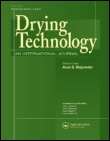
DRYING TECHNOLOGY
Elevating Drying Technology Research to New HeightsDRYING TECHNOLOGY is a premier journal dedicated to the dissemination of cutting-edge research and advancements in the field of drying processes across various industries, including chemical engineering and physical chemistry. Published by Taylor & Francis Inc, this journal has established itself as a key resource with an impressive impact, indicated by its Q2 quartile ranking in both the Chemical Engineering (miscellaneous) and Physical and Theoretical Chemistry categories. The journal’s extensive coverage since its inception in 1983 offers a comprehensive perspective on theoretical and applied research related to drying technologies, with a strong focus on innovation and practical applications. Researchers, professionals, and students alike can access a wealth of knowledge that enhances their understanding and fosters collaboration within this vital scientific discipline. Although not openly accessible, DRYING TECHNOLOGY remains an essential reference for those engaged in related fields, particularly within the United States and globally.

Electrica
Empowering engineering minds with open access knowledge.Electrica is a prominent open access journal dedicated to advancing the field of Electrical and Electronic Engineering. Published by AVES since its inception in 2018, it has rapidly established itself as a crucial platform for disseminating high-quality research and innovative findings within the engineering community. With an ISSN of 2619-9831, Electrica operates under a rigorous peer-review process to maintain its scholarly integrity while promoting accessibility and knowledge sharing. Positioned in the third quartile of the 2023 rankings for Electrical and Electronic Engineering on Scopus, the journal has garnered a significant following, ranked #490 out of 797 in its category, reflecting its growing impact in the field. Researchers, professionals, and students can benefit from the wealth of resources available through this journal, as it not only provides a space for emerging ideas but also fosters collaboration and dialogue among experts. The journal's commitment to disseminating impactful research continues to shape the future of electrical engineering in Turkey and beyond.
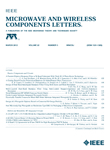
IEEE MICROWAVE AND WIRELESS COMPONENTS LETTERS
Connecting Ideas in the Dynamic World of Wireless Technology.IEEE Microwave and Wireless Components Letters, published by the esteemed IEEE - Institute of Electrical and Electronics Engineers, stands as a crucial platform for disseminating innovative research in the realms of microwave and wireless technology. With an impact factor that emphasizes its significance in the academic community, the journal has achieved notable rankings, including Q1 in Condensed Matter Physics and Q2 in Electrical and Electronic Engineering for 2023. Covering an extensive range of topics pertinent to practitioners and theorists alike, it aims to provide rapid publication of short, concise letters reporting on cutting-edge research findings that drive the field forward. Although coverage in Scopus has been discontinued, the journal remains an influential resource, reflecting its long-standing dedication to advancing electrical engineering and applied physics, thus making it an essential read for anyone invested in these dynamic disciplines.

Journal of Semiconductor Technology and Science
Fostering Collaboration in Semiconductor ResearchThe Journal of Semiconductor Technology and Science, published by the IEEK PUBLICATION CENTER, serves as a vital platform for advancing the field of semiconductor technology and materials science. With its ISSN 1598-1657 and E-ISSN 2233-4866, this journal has been pivotal since its inception in 2005, continuing to shed light on innovative research until 2024. Although currently classified in the Q4 category for both Electrical and Electronic Engineering and Electronic, Optical and Magnetic Materials, it remains a crucial resource for those in industry and academia alike, providing in-depth analyses and findings that explore the complexities of semiconductor applications. Researchers and professionals will find value in its comprehensive articles that address current trends and future directions in semiconductor technologies. This open-access journal, published in South Korea, is positioned to foster collaboration among students, professionals, and leading researchers in the ever-evolving technology landscape.
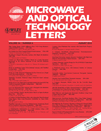
MICROWAVE AND OPTICAL TECHNOLOGY LETTERS
Elevating Academic Dialogue in Electromagnetic ApplicationsMicrowave and Optical Technology Letters is a prestigious journal published by Wiley that serves as a vital platform for disseminating cutting-edge research in the fields of microwave and optical technology. Established in 1988, this journal has built a reputable presence, with its scope encompassing critical areas such as atomic and molecular physics, condensed matter physics, and electrical and electronic engineering. With a notable ranking in the Q3 quartile across multiple scientific categories, Microwave and Optical Technology Letters provides researchers, professionals, and students an invaluable resource to stay informed about the latest advancements and applications in these dynamic disciplines. Although the journal is not open access, its rigorous peer-review process ensures the highest quality of published content, contributing to an enriched academic dialogue. Researchers looking to enhance their knowledge in electronic, optical, and magnetic materials will find this journal particularly beneficial. For more information, please visit Wiley's official website or subscribe to stay updated on the latest volumes.

Progress in Electromagnetics Research Letters
Elevating Knowledge in Electronics and OpticsProgress in Electromagnetics Research Letters, published by EMW PUBLISHING, is a vital peer-reviewed journal dedicated to the fields of electronics, optics, and magnetics. With an emphasis on innovative research and technological advancements, this journal has established itself in the academic community since its inception in 2008, and it will continue to publish valuable findings through 2024. The journal holds a respectable Q3 ranking in Electronic, Optical and Magnetic Materials, positioning it among the noteworthy contributions to the field, despite its percentile standing in Scopus. Researchers and professionals benefit from its commitment to disseminating high-quality research without the constraints of open access, ensuring that cutting-edge ideas reach a targeted audience. By fostering knowledge exchange, Progress in Electromagnetics Research Letters is poised to influence current and future advancements in electromagnetic technologies, making it a trusted platform for scholars and practitioners alike.